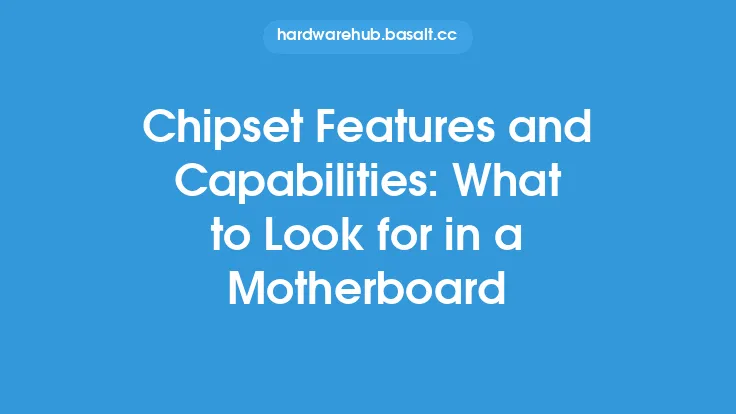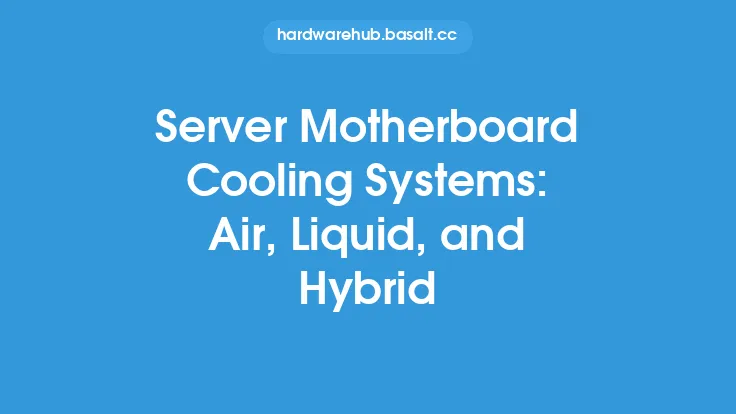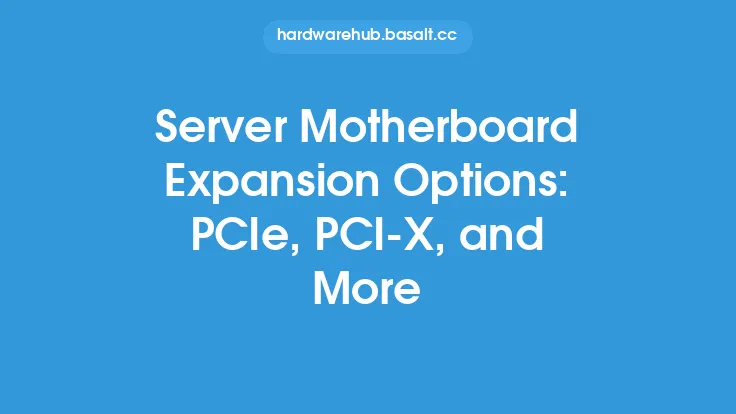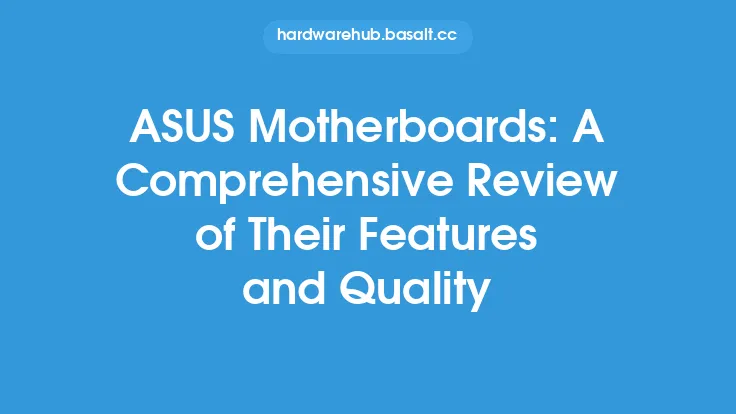When it comes to building or upgrading a computer, one of the most critical components to consider is the motherboard. The motherboard acts as the main circuit board, connecting all the hardware components together and facilitating communication between them. In the realm of motherboards, there are two primary categories: server motherboards and workstation motherboards. While both types of motherboards share some similarities, they also have distinct differences in terms of design, features, and functionality. In this article, we will delve into the differences between server and workstation motherboards, exploring their unique characteristics, advantages, and use cases.
Introduction to Server Motherboards
Server motherboards are designed to support high-performance, high-availability, and high-reliability computing environments. They are typically used in data centers, cloud computing, and enterprise settings where multiple users and applications require access to shared resources. Server motherboards are built with robust features, such as redundant components, error-correcting code (ECC) memory, and advanced cooling systems, to ensure maximum uptime and minimal downtime. They often support multiple processors, large amounts of memory, and a wide range of storage and networking options. Server motherboards are also designed to be highly scalable, allowing for easy upgrades and expansions as the needs of the organization grow.
Introduction to Workstation Motherboards
Workstation motherboards, on the other hand, are designed for high-performance computing applications, such as video editing, 3D modeling, and scientific simulations. They are typically used by professionals who require powerful systems to handle demanding workloads. Workstation motherboards are built with high-quality components, such as advanced chipsets, high-speed memory, and robust power delivery systems. They often support multiple graphics cards, high-speed storage options, and advanced networking features. Workstation motherboards are designed to provide a stable and reliable platform for compute-intensive applications, while also offering flexibility and customization options for users.
Key Differences Between Server and Workstation Motherboards
One of the primary differences between server and workstation motherboards is their design and layout. Server motherboards are typically designed with a focus on reliability, scalability, and maintainability, while workstation motherboards are designed with a focus on performance, features, and flexibility. Server motherboards often have a more compact design, with a emphasis on density and packing multiple components into a small space. Workstation motherboards, on the other hand, tend to have a more spacious design, with a focus on ease of use and upgradeability. Another key difference is the type of components used. Server motherboards often use more robust and reliable components, such as ECC memory and redundant power supplies, while workstation motherboards use high-performance components, such as overclocking-friendly memory and high-end graphics cards.
Processor and Memory Support
Server motherboards typically support multiple processors, with some models supporting up to 4 or 8 processors. They also support large amounts of memory, often with capacities ranging from 128GB to 1TB or more. Workstation motherboards, on the other hand, typically support a single processor, although some high-end models may support multiple processors. They also support smaller amounts of memory, typically ranging from 16GB to 128GB. Server motherboards often use ECC memory, which provides error-correcting capabilities to detect and correct data corruption. Workstation motherboards, on the other hand, often use non-ECC memory, which provides higher performance and lower latency.
Storage and Networking Options
Server motherboards often have a wide range of storage and networking options, including support for multiple hard drives, solid-state drives, and storage area networks (SANs). They also support multiple networking options, including Ethernet, Fibre Channel, and InfiniBand. Workstation motherboards, on the other hand, typically have more limited storage and networking options, although they may support high-speed storage options like NVMe and multiple networking options like Wi-Fi and Ethernet. Server motherboards often have advanced storage features, such as RAID support and storage controllers, while workstation motherboards may have more basic storage features, such as SATA and PCIe support.
Power Supply and Cooling Systems
Server motherboards often have redundant power supplies, which provide backup power in case of a failure. They also have advanced cooling systems, including air and liquid cooling options, to keep the system running at optimal temperatures. Workstation motherboards, on the other hand, typically have a single power supply, although some high-end models may have redundant power supplies. They also have more basic cooling systems, although some models may have advanced cooling features like liquid cooling and heat pipes. Server motherboards often have advanced power management features, such as power capping and dynamic voltage and frequency scaling, while workstation motherboards may have more basic power management features, such as overclocking and undervolting.
Form Factors and Expansion Options
Server motherboards come in a variety of form factors, including rackmount, tower, and blade. They often have a wide range of expansion options, including PCIe, PCI-X, and PCI. Workstation motherboards, on the other hand, typically come in a standard ATX or E-ATX form factor, although some models may have a proprietary form factor. They also have more limited expansion options, although some models may have multiple PCIe slots and other expansion options like USB and SATA. Server motherboards often have advanced expansion features, such as hot-swappable components and modular design, while workstation motherboards may have more basic expansion features, such as tool-less design and easy access to components.
Conclusion
In conclusion, server and workstation motherboards have distinct differences in terms of design, features, and functionality. Server motherboards are designed for high-availability, high-reliability, and high-performance computing environments, while workstation motherboards are designed for high-performance computing applications. While both types of motherboards share some similarities, they have unique characteristics, advantages, and use cases. By understanding the differences between server and workstation motherboards, users can make informed decisions when selecting a motherboard for their specific needs and applications. Whether you're building a data center, a cloud computing environment, or a high-performance workstation, choosing the right motherboard is critical to ensuring optimal performance, reliability, and scalability.





